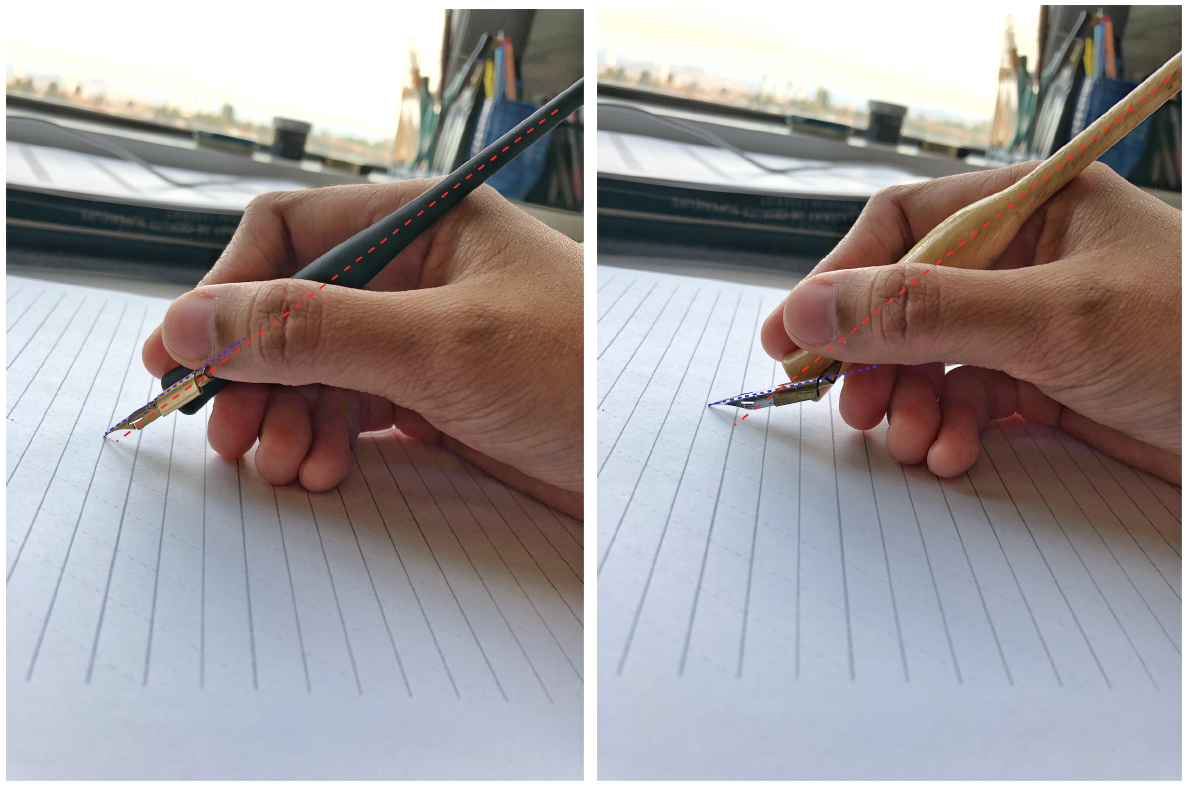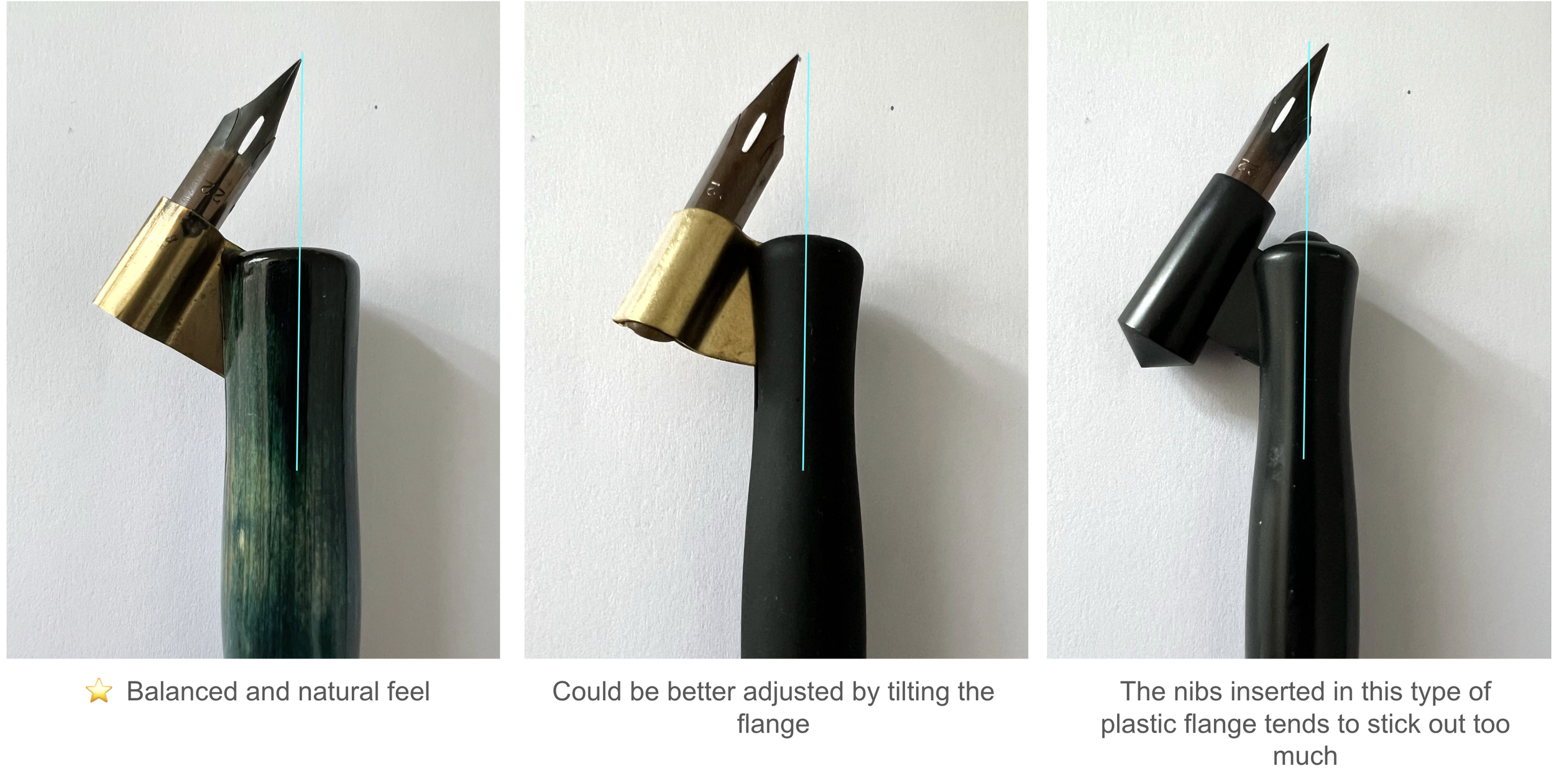Pen Holders and Nib angle
There are two types of pen holders: straight and oblique.
The straight pen has a groove at the top where you can insert the nib into. I would recommend using a straight pen if you want to do a vertical script (not slanted at all). I personally have trouble using the straight pen for a slanted script like Copperplate because I find that I would have to twist my hand uncomfortably or face my palm down to the paper to get my nib on slant, but different people hold pens differently so I would still encourage you to try using it.
The oblique pen has a metal attachment to the pen called a flange. The metal flange protrudes at an angle from the pen holder and is meant to assist you in performing a slanted script.
Anatomy of the Oblique Pen Holder
You insert the body of the nib into the metal flange. This flange places the nib at an angle, making it easier for you to write slanted scripts.
Things to know about Oblique Pens
Tilt Angle of the Flange
When you view the pen sideways, you will notice that the flange has a separate angle of its own that may or may not be the same as the angle of the pen staff. I personally find that lowering the tilt angle of the flange towards the paper allows for a smoother writing experience. You can push the metal flange and adjust it with your fingers or with a pair or pliers. Note though that if your nib is too low to the paper, it could deposit blobs of ink — you wouldn’t want that! On the other hand, having the nib angled steeply will give you more resistance when you are pressing to create shades. As a result, your shades tend to be thinner.
Everyone has their own preference on this and you would develop your own preference the more you use the tool. Here’s another photo comparing steep and low flange angles.
Steeper nib-to-paper angle:
There is more resistance in splaying the tines of the nib
Shades tend to be naturally thinner
If you want shades to be thicker, you need to apply more pressure
Thinner and crisper hairlines
Paper tends to snag more
Scratchy writing
Personally, it is easier for me to create squared tops with a steeper angle
Lower nib-to-paper angle:
There is less resistance in splaying the tines
Easy to create thick shades (but if the angle is too low, you could deposit too much ink onto the paper!)
Less pressure needed
Hairlines can get thicker
Nib catches less fibers
Smoother writing
2. Inward Cant of the Flange
The inward cant of the flange affects how the tines spread out upon pressure. Having it flat to the flange works fine but gives more resistance to pressure. Having the nib slightly canted inwards allows for a better flex and tine control.
3. Flange Angle for Tip’s Center Alignment
Lastly, pay attention to how the flange places the tip into center alignment. If you trace an imaginary vertical line from the center of the pen, the tip of the nib should fall as close as possible to that center line. Having the tip aligned to the body of the pen allows for a more balanced feel while writing. Since the metal flange dislodges the nib away from the pen staff, putting its tip back to the center line allows the pen to feel more natural to write with.
Hope this post helps you get to know your pen holders a bit better!






